#laserdisc
Text

1K notes
·
View notes
Text

BBC Domesday System
916 notes
·
View notes
Text

I can't find my laserdisc of Les Femmes Erotiques. I've got the sleeve here, but the disc itself is missing!
WHO STOLE MY LASERDISC PORN
991 notes
·
View notes
Text
#tumblr old#poll#obsolete technology#vhs#cassette tape#crt tv#landline telephones#laserdisc#boombox#nokia brick#floppy disk#retro computing
2K notes
·
View notes
Text
a day at the video store, March 1991


#laserdisc#retrowave#retro#vhs#vaporwave#1990s#1991#video store#90s gifs#90s gif#90s#tv#90s aesthetic#gifs#liminal tumblr#electronics#vaporwave aesthetic#retro tech#blue#neon aesthetic#neon glow#neon lights#glow#retro media#blue screen#zoom#red#neon sign
5K notes
·
View notes
Text

David A. Wagner, from American Photography Showcase 12 (1989)
scan
#80's#retro 80's#vhs power graphics#retro#technology#retro 80s#vintage#80s#80's ad#80s design#80s aesthetic#laserdisc#80s ad
378 notes
·
View notes
Text

Philips VLP 700 - 1979
734 notes
·
View notes
Text

#retrowave#retro tech#laserdisc#compact disc#retro aesthetic#retro style#retro design#vintage tech#vintage electronics#retro audio#80s tech#80s nostalgia
300 notes
·
View notes
Text




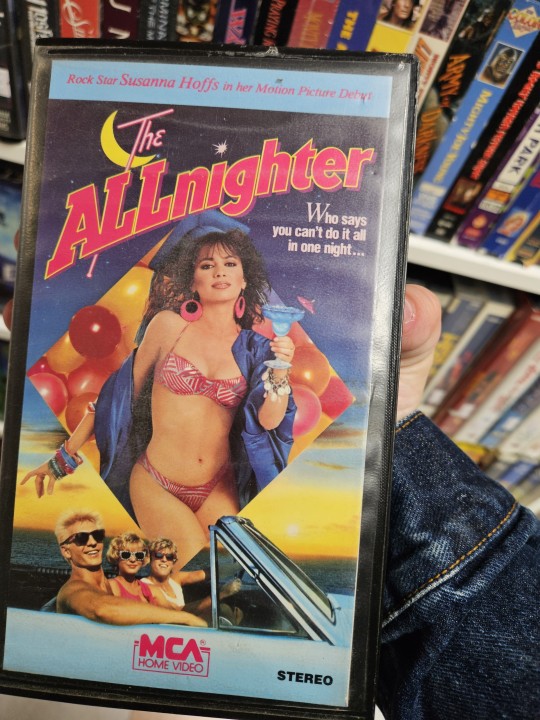
Not so shifty, but still strange.
The original cut of Nightbreed on LD, a strange sweater, a misprinted book cover, and two strange VHS tapes. I got A Polish Vampire in Burbank.
All found in a variety of stores in Calgary, AB. (Game Traders, Fairs Fair, a vintage clothing store, and a media booth at Crossroads Market I didn't get the name of).
147 notes
·
View notes
Text

1981 Pioneer VP-1000 LaserDisc
72 notes
·
View notes
Text

Clean cover illustration from the LD release of the OVA "Can Can Bunny Extra Vol.2" [NSFW 18+].
Art by Ryo Ramiya.
93 notes
·
View notes
Text
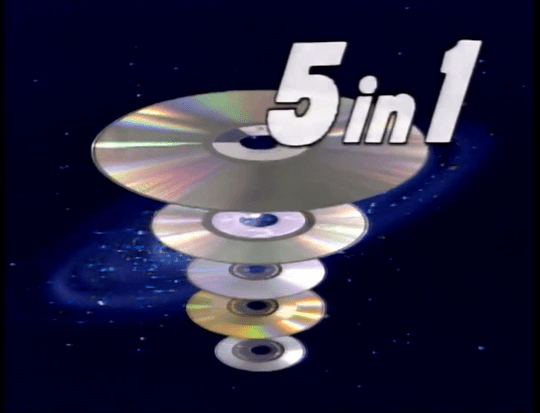
937 notes
·
View notes
Text
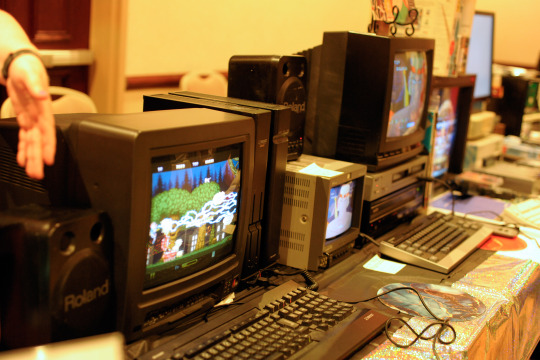




Various Japanese computers from thegirlg33k - VCF Midwest 18
#vcfmw18#vcf midwest 18#vintage computer festival midwest 18#commodorez goes to vcfmw18#msx#laserdisc#casio loopy#sharp 68000
78 notes
·
View notes
Text


Oh no! I hate when this happens. What film is this anyway?

oh no
OH NO

Well, if you're gonna watch it, you can only really appreciate it in on the original laserdisc
260 notes
·
View notes
Photo
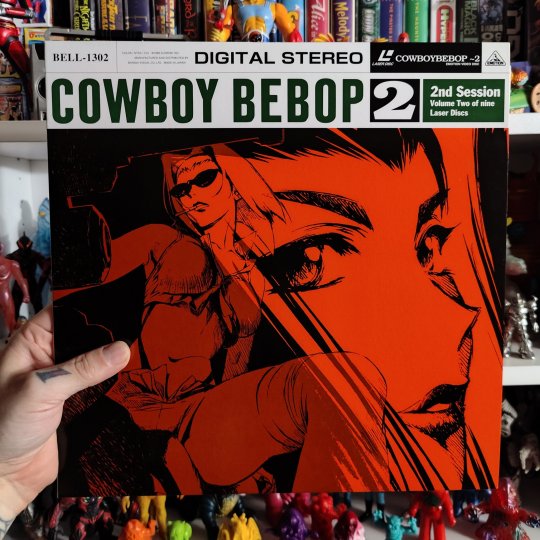
#Cowboy Bebop#Faye Valentine#LaserDisc#Anime#cover art#art#design#character design#character art#mine#a good mail day
239 notes
·
View notes
Text
Dear Brother (Oniisama e…) LaserDisc scans and machine translations

These past few years I have fallen in love with the work of director Osamu Dezaki. Alongside Tomorrow’s Joe (Ashita no Joe), I hold Dear Brother in the highest regard.
It was a 1991 anime based on Riyoko Ikeda’s 1974 manga. You should watch the anime. It’s on Tubi for free. But really, just trust me. Buy the Blu-Ray from Discotek.


This anime came and went. There isn’t any merchandise besides some phone cards. Decaying fan sites and discourse is out there, but it’s a bit of a hunt.
Some time ago I saw a fan letter written by Hideaki Anno, apparently from the LaserDisc releases. From what I could tell, the LaserDisc packaging featured a treasure trove of notes from the staff that I just had to read. But I couldn’t find them!
If you’re not aware, LaserDiscs are one step above burnable trash in Japan — often on sale for 200 yen or less in heavy boxes shoved into the corner of second-hand anime stores. So I bought all five volumes of the 1993 Dear Brother LaserDisc release, was thrilled to notice unique letters from staff and industry luminaries in the interiors, and I scanned everything! And machine translated them.
I hope this (long, comprehensive) post brings fans of Dear Brother the same pleasure it brought me to compose it!
Note: I cannot read Japanese. I’ve used Google Lens for OCR, and GPT-4 for translation. My scans are good (and you can get them on Archive.org in high res) but these translations are not archive-quality and should not be depended on without verification. I’ve done my best to make corrections and have attempted to wrangle the correct tone and meaning out of the AI, but they’re essentially just for fun. Corrections of the most egregious stuff would be welcomed, email me: [email protected].
Volume One
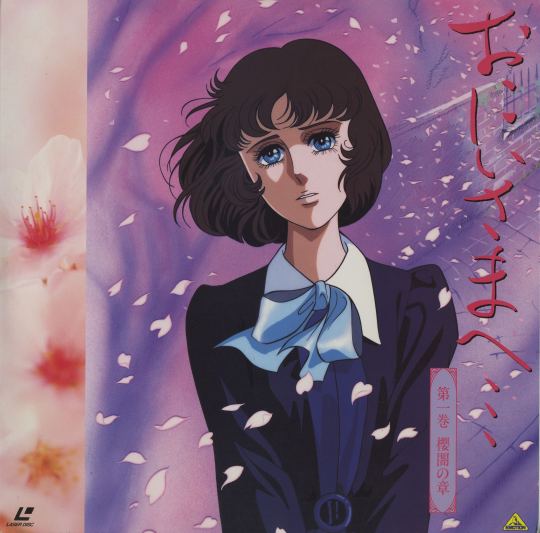
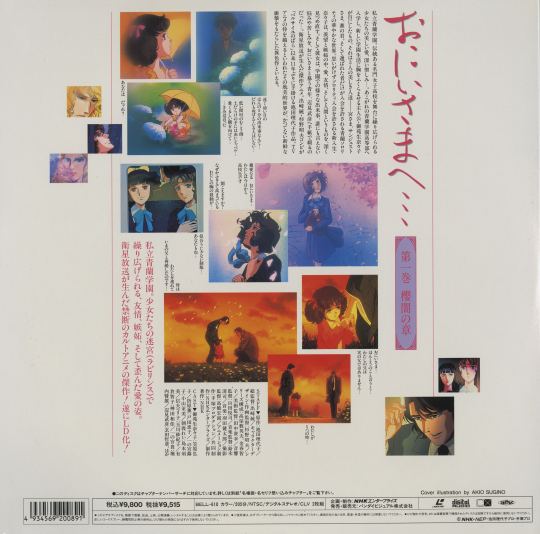
Each disc is themed after a character and colour. The back is peppered with screencaps and notable quotes (“Anata wa dare?” says little Nanako) as well as series credits. The two notable parts to translate are the disc synopsis, and the subheading (seen here in pink on the far left.) Maybe it’s a pull quote? Not really. So I called it a subheading.
Volume One Subheading
A forbidden cult anime masterpiece born of satellite broadcasting is finally available on LD.
Volume One Synopsis
Private Seiran Academy. A story of beautiful love and deep hatred unfolds at this prestigious all-girls high school steeped in tradition. The protagonist, Nanako Misonoo, who is thrilled to enroll in the high school division of her dream academy, encounters three stunning individuals: Miya-sama, Sanjust-sama, and Sho no Kimi. She also gets introduced to the glamorous world of Seiran Sorority, a society that only the chosen few are allowed to join. As a freshman granted unexpected membership in the Sorority, Nanako begins to take a deep look at love, friendship, and the essence of being human, all while being surrounded by envy and jealousy. She confides her various experiences at the academy, along with unspeakable worries and hardships, in letters to her elder “brother” and a young man named Takehiko Henmi… A masterpiece anime born of satellite broadcasting. It is a work by Riyoko Ikeda that the Dezaki-Sugino duo took on for the first time in 11 years since “The Rose of Versailles.” It is considered a unique work that brings a fresh, unprecedented shock by transcending the framework of TV anime with its aesthetic world.
The disc looks like this:
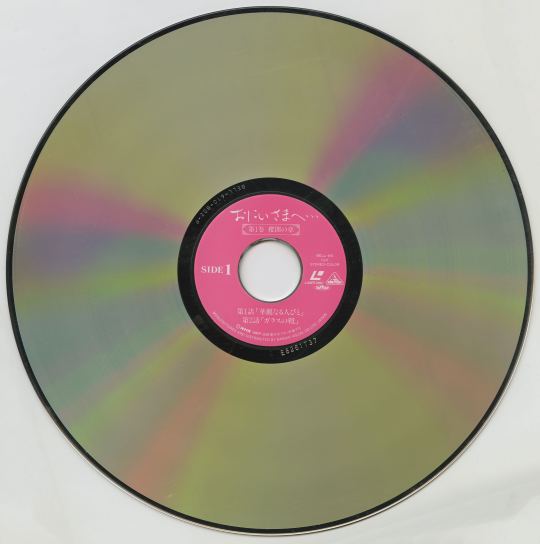
An “obi” (sash that covers the spine) is included. Of course, it says “My tears won’t stop!” in huge text, sells it as the latest Dezaki/Sugino collaboration, and describes it as tanibi na sekai — a poetic concept of a romantic, sublime world of aesthetic beauty.
There are two paper inserts in each volume. The first one looks like this, and is an index of LaserDisc chapter markers based not on plot developments, but notable character quotes.
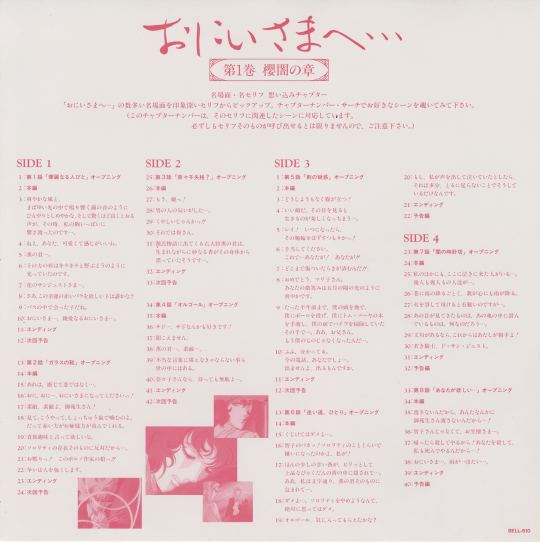
There’s also a form you can fill out to get a telephone card. Simply cut out a coupon from each volume to prove you bought the full set. Be quick, entries are due end of March 1994.
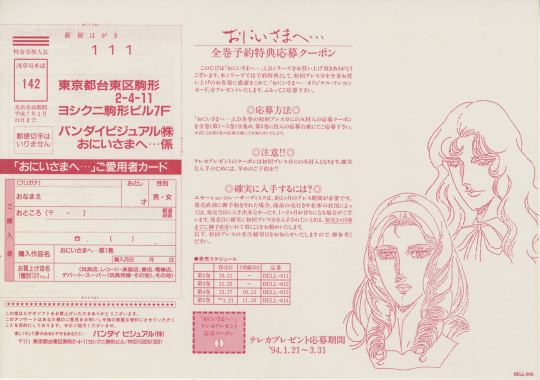
The interior is the best part. Here’s the spread for Volume One.

I haven’t translated episode synopses, but I’ve attempted to translate both the staff letter and the “letter to dear brother” from someone external to the production. There’s a bio for each author.
Volume One’s “From the staff to all the fans”
Bio:
Osamu Dezaki
Joined Mushi Production in 1963. After directing series like “Astro Boy” and “Goku’s Great Adventure,” he was selected as the general director for “Tomorrow’s Joe” in 1970 at the young age of 26. Born on November 18, 1943, and hailing from Tokyo, he has received high praise as a director. Subsequently, he has brought numerous masterpieces into the world, including “Aim for the Ace!”, “The Adventures of Ganba,” “Nobody’s Boy,” “Treasure Island,” “The Rose of Versailles,” “Space Adventure Cobra,” “BB,” and more. He is also referred to as “Sakimakura” and “Mataba Sakimakura.”
The letter:
This is my second time working on Ikeda-san’s work since “The Rose of Versailles.” Her works have a unique aroma, whether you call it a theme or a world. They seem to pursue the literary aspect of the story. When I read the original work of “Dear Brother,” I was very drawn to these aspects, and at the same time, I felt a sense of anticipation that it would be difficult, but perhaps various images could be created. It’s not just about being cool or intense; it’s about creating images that resonate more and more with people’s hearts.
Fundamentally, there is an original story, but when the characters start to move, and each begins to live, the story could go anywhere. I always had that sense of tension. So, rather than sticking to the original work, I placed more emphasis on the directorial focus of the reality of the characters who had started to move.
As for the techniques, it was not something I was particularly conscious of, but I used a lot of completely black shots simply because I honestly felt they needed to be black. Whether or not it was successful, I wanted to effectively overlap the visuals with the characters’ psychology by delivering such physiological shocks. The psychological fluctuations of the people are indeed the overall aroma of this work. How the audience perceives that aroma is something I want to leave up to each individual’s free sensitivity. - July 8, 1993, at Tezuka Pro
Volume One’s “Letter to Dear Brother”
Bio:
Mutsumi Inomata
Born on December 23 in Kanagawa Prefecture. After working with Ashi Production and Kaname Production, she is currently freelance.
After going through Ashi Production and Kaname Production, she is now a freelance artist. Mutsumi Inomata is her real name. She was born on December 23 in Kanagawa Prefecture. She is active in both the fields of anime character design and illustration. In the realm of animation, she served as the character designer and chief animation director for works such as “Plawres Sanshiro” and “Genmu Senki Leda,” and as the character designer for “Future GPX Cyber Formula.” As an illustrator, she has also provided numerous illustrations for novels, including titles like “Prince of the Universe,” “Dragon Quest,” and “Continent of the Wind.”
The letter:

Comics are way hard to translate without actually knowing Japanese. Here’s my best effort to uncover some meaning.
For several years, I had stopped watching anime and stuff… Living a hectic life, it’s been like this for a while now. Having a set day and a set time to watch a specific program (not just limited to anime), had become impossible for me. Recording videos is also a hassle, and first and foremost, I just don’t feel that “I must watch the next episode!” kind of emotion anymore.
Ah well, I was thinking maybe I’ve just become an adult.
Heh heh heh. I’m such an idiot.
No, that’s not it.
The blonde guy in the bottom-right is labeled as her friend, and she’s saying something about “Poupee-chan”. I think in the second panel he’s yelling saying “But that doll is supposed to be a girl!”
The final monologue starts with:
By the way, I have a container for “dangerous items” at the corner of my work desk. I keep things like cutter blades in it, so that I don’t accidentally drop them on the floor and cut myself or something.
The “dangerous items” container I’m using now has a sticker with Saint-Just-sama’s “Nanako’s Eyes,” heh heh heh ♡
That’s about all there is to note about Volume One, besides the fact it comes with an enormous poster (it’s the same art used on the cover of the Discotek Blu-Ray.)
Volume Two


Volume Two Subheading
Those eyes of that person, mysteriously and beautifully shining. Why these feelings? Why...? The increasing heartbeat, the endless tears of adolescence. A masterpiece of forbidden cult anime born from satellite broadcasting! The second installment on LaserDisc!
Volume Two Synopsis
Nanako’s life at school, after being chosen as a sorority member, was not all glitz and glamour. There were misunderstandings with her best friend Tomiko, and jealousy and slander from other students, including Misaki Aya. And then there was the obsessive love from her fellow sorority member, Nobuo Mariko. “What is a sorority? Is it really that important?” Nanako began to question the very existence of sororities. Yet, she tries to look straight into herself, even while confused. Always before her were the mysteriously beautiful and shining eyes of Saint-Just. Drawn to those eyes that seemed to peer into a distant past, Nanako attempts to uncover their secret. Then, by chance, she finds out about the special relationship between Fukiko and Saint-Just. Could it be that Miya-sama and Saint-Just-sama are…? The complicated interplay of relationships and the previously enigmatic characters start to become a little clearer in “Volume 2: The Chapter of Freezing Rain.” The subtle breaths of the people surrounding Nanako can be heard.

Volume Two’s “From the staff, Dear Nanako”
Bio:
Hideo Takayashiki
Born in 1947, native of Iwate Prefecture.
After passing through Osamu Tezuka’s Mushi Production, became a scenario writer.
Known for scripts of theatrical anime films such as “Hang in There, Tabuchi-kun!”, “Barefoot Gen”, and the “Phoenix” series. Also worked on numerous TV anime scripts like “Gutsy Frog”, “Gamba’s Adventure”, and “Tomorrow’s Joe”.
Additionally, wrote scripts for original videos and TV dramas like “The Laughing Target”, “One-Pound Gospel”, and has written many novels, actively contributing as a versatile scriptwriter.
Member of the Japan Broadcast Writers Association.
The letter:
Dear Nanako Misonoo,
How are you? How is university life?
It’s hard to believe that three years have passed since then. I was involved with you and those around you for just one year, but in retrospect, it was a very intense year.
In any case, I did something terrible to you. It may have been the extreme form of “bullying” in some sense.
My work as a scriptwriter involved probing and expanding the uncharted worlds between the frames of original works, constructing new narratives. In a sense, it was a painful job. And for you, it was excruciating. But now it’s a wonderful memory. I am filled with the feeling that I did some real work after a long time.
How is your best friend, Tomoko? What about Mariko? I assume Fuki is becoming more and more beautiful? Do you occasionally receive letters from Kaoru?
This summer marked the third anniversary of Saint-Just-sama’s passing. Thinking back, it was an unusually hot day. Your anguished form, waiting alone at the platform while listening to the chirping cicadas and the sound of the sea, is still etched in my memory.
I hear that there has not been a single day without flowers at the electric pole where Saint-Just-sama fell.
I am grateful for the chance to have met you and the people around you.
Autumn, 1993
Volume Two’s “Letter to Dear Brother”
Bio:
Kazuhiko Shimamoto
Born April 26, 1961
From the hinterland of Hokkaido
After being selected as an honorable mention in the 9th Shogakukan Newcomer Comics Award
Debuted with “Hissatsu no Transfer Student”.
His masterpieces include Gyakkyo Nine’ and Moeyo Pen. Examples include Flame Transfer Student’ and Kamen Rider ZO.”
The letter:
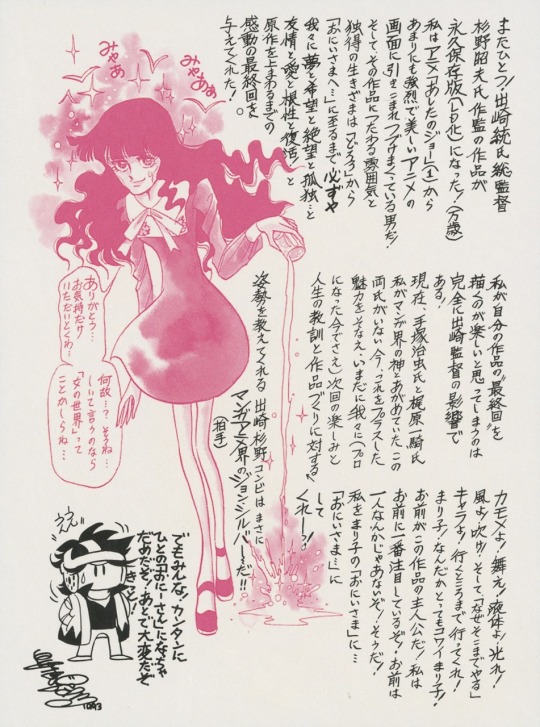
Another piece directed by Osamu Dezaki and supervised by Akio Sugino has become a permanent edition (converted to LaserDisc)! (Hooray!)
From the anime “Ashita no Joe” (1), the unique and beautiful way of life portrayed in anime is so intense that it has consistently given us dreams, hopes, despair, loneliness, friendship, love, perseverance, and revival! These works have even surpassed the original works in the emotional impact of their final episodes.
I continue to be captivated by the atmosphere conveyed by these works. The reason I enjoy drawing the final episodes of my own works is entirely due to Director Dezaki’s influence!
Currently, Osamu Tezuka and Ikki Kajiwara, the two individuals whom I revered as gods in the manga world, are no longer with us. Even now, these works, which possess added charm, continue to provide us (even those who have become professionals) with anticipation for the next episode, life lessons, and motivation for creating works.
Seagulls, dance! Liquids, shine!! Wind, blow and then, “Why go to such lengths?”
Charafo! Go as far as you can go! Mariko, somehow you’re really scary, Mariko.
Then the words scribbled next to the drawing of Mariko:
You are the protagonist of this work! I’m paying the most attention to you. You’re not alone! That’s right! Make me Mariko’s ‘older brother’… ‘older brother’…
Mariko is saying (OCR mangling here, sadly):
Thank you… I just feel… that’s special…
Why not? If I had to say, maybe it’s a ‘woman’s world’…
(Clearly a reference to Rikiishi Toru of Dezaki’s earlier anime Ashita no Joe, who intensely speaks of a “man’s world”. He and Mariko love a good starvation diet!)
The little chibi version of Shimamoto(?) in the bottom left is saying:
But everyone, don’t easily become someone’s ‘older brother.’ It’ll be troublesome later!
GPT-4 noticed a cute reference it couldn’t include in its translation. Its note:
The text seems to be OCR scanned partially, and hence some meanings might be missing or distorted, such as “マンガ界のジョン・シルバーだ!!”, which appears to compare Dezaki and Sugino to a ‘John Silver’ of the manga world.
Volume Three

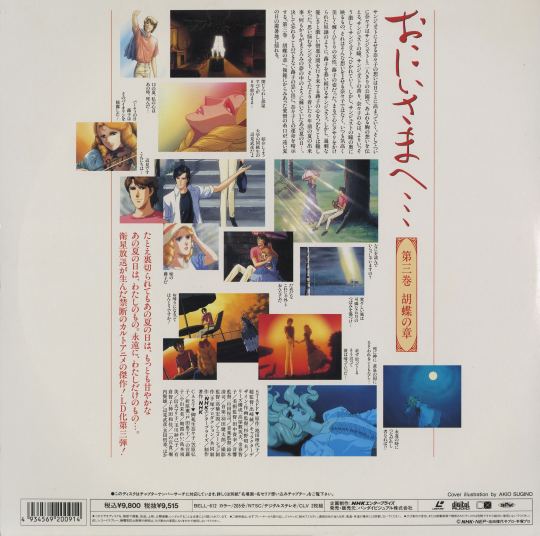
Volume Three Subheading
It’s not too late; our beautiful time can still be preserved, forever unspoiled, just like this white snow… A forbidden masterpiece of a cult anime born from satellite broadcasting! The fourth release on LD!
Volume Three Synopsis
Suddenly summoned to the sorority house, Nanako is pressured by Fukiko to end her relationship with Hemimi. Upon hearing this, Saint-Just confesses her complicated relationship with Fukiko. The shocking truth behind why “Miya-sama” wanted Nanako in the sorority unfolds, leaving her deeply shaken. Meanwhile, Saint-Just is tormented by the realization that the stronger her feelings for Fukiko, the more she ends up hurting her. The complex relationship between Saint-Just and Fukiko has a tragic past involving a near-suicidal event. On another front, Mariko causes an incident by attacking Misaki, motivated by slander about her parents’ divorce, which leads to a movement spearheaded by Kaoru to abolish the sorority. Amid the crumbling sorority, Fukiko remains composed. The fourth volume, “Chapter of Snow Dance,” captures her frightening yet noble confidence and deep sorrow. In the snow that never melts, remains the sad yet beautiful promise of Saint-Just.

Volume Three’s “From the staff to all the fans”
Bio:
Tomoko Konparu
Born on March 13, 1956, in Nara Prefecture. Pisces. Blood type AB. A fan of both manga and anime, she became a screenplay writer and debuted during her university days with “Ikkyu-san.” Anime works include “Urusei Yatsura: Only You,” “Urusei Yatsura: Remember My Love,” “Touch 2: Farewell Gift,” “Phoenix,” “Cat’s Eye,” “Hime-chan’s Ribbon,” and more. Novel works include “Mystery at the Tower of London,” “Mystery at Nara’s Great Buddha” (published by Kobunsha Bunko), among others.
The letter:
When I heard that this work was going to be turned into an anime, I was shocked. I’d known about the series since its serialization, so my reaction was something like, “What!? Are they really going to do it!? And on NHK of all places!?”
Expanding on the original work and filling in the parts that hadn’t been depicted was incredibly challenging, but also enjoyable. What surprised me was that, around the midpoint, the characters started to assert themselves, taking actions that were entirely different from what I had planned. The princess would say, “My pride isn’t so easily swayed,” San Just would insist, “I’m not going to commit suicide,” and even the older sisters of the sorority were like, “We can’t back down now.” Every time this happened, I had to rework the composition. This phenomenon of “characters moving on their own accord” was a first for me in an anime series, and it was an incredibly fresh and pleasant experience.
That being said, it’s rare to be so emotionally invested in characters while working, to the point of even role-playing their lines. To be honest, this was a work that got my inner anime fan excited. Ah, I want to do work like this again!
Volume Three’s “Letter to Dear Brother”
Bio:
Keiko Fukuyama
Born on September 7. From Tokyo.
Currently, she is working as a manga artist, authoring works like “Ruru-chan of Star Island” and “The Tale of Appfelrant.” She also illustrates for children’s stories, including the “Mama Ghost Series.”
The letter:

It appears to be titled “To the Unforgettable Older Sister”. Much of it is too hard to OCR. It opens with this caption:
“To My Older Brother…” is so melancholic and sentimental that it instantly takes us back to our student days where we felt we were tossed around by fate for no fault of our own…
Here’s some of the text beside the character drawings:
Fukiko/Saint-Just: Reputed as the most beautiful sisters in school
Mariko: The most popular Mariko-san who lured our tears. There’s a lot to think about!
Tomoko: A straightforward, kind friend
Nanako: So there I was, fully embracing my Nanako persona, reaping all the sorority perks you could imagine. (I mean, they even say they’ll hook me up with a dreamy guy!) 💧 And just when I’m soaking up that sorority vibe, guess who’s set to make a surprise appearance right after the teaser for the next issue!
Text coming out of the TV:
It was “Oniisama e”!!!! Poor Mariko-san, right~
Misaki-san also, there was no need to say that much, you know.
Volume Four

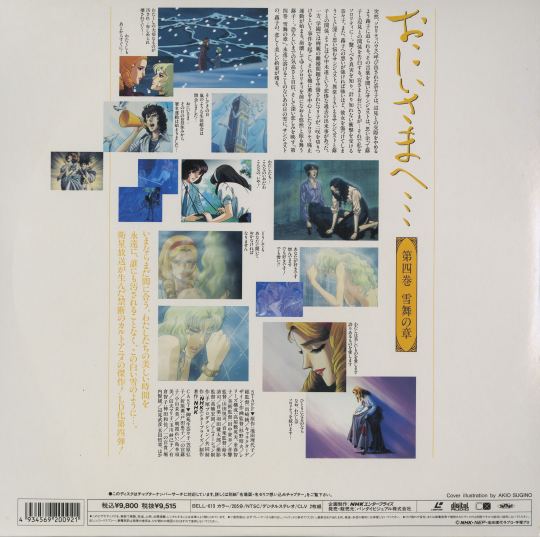
Volume Four Subheading
It’s not too late yet, our beautiful time can still last forever, unspoiled by anyone, just like this white snow… A forbidden cult anime masterpiece born from satellite broadcasting! The fourth installment on LD!
Volume Four Synopsis
Suddenly summoned to the sorority house, Nanako is pressured by Fukiko to end her relationship with Hemmi. Hearing this, Sanjust is compelled to confess his relationship with Fukiko. The shocking truth makes Nanako reel in disbelief. He deeply ponders that the stronger his feelings for Fukiko, the more he ends up hurting her. The unusual relationship between Sanjust and Fukiko reveals a tragic past of a failed double suicide. Meanwhile, in the school, an incident occurs where Mariko, slandered for her parents’ divorce, attacks Misaki, leading to an anti-sorority movement centered around Kaoru. Fukiko still acts nonchalantly in front of the crumbling sorority. The volume unfolds displaying Fukiko’s terrifying yet noble confidence and deep sorrow. A beautiful yet sad promise lingers in the snow that never melts.

Volume Four’s “From the staff to all the fans”
Bio:
Kenichiro Haneda
Born on January 12, 1949. Graduated from Toho Gakuen College of Music in the Piano Department.
An accomplished concert pianist, Kenichiro Haneda has a broad range of experience, including composing and performing music for movies and TV themes, as well as acting as a musical director for musicals and commercials. He has worked on numerous soundtracks such as NHK’s morning drama “Youth Family,” TBS’s “Women Work Hard” and “Life Is Full of Demons.” With his genre-defying approach to music and his bright, humorous personality, he is a sought-after multi-artist in various fields.
The letter:
I’ve worked quite a bit with Music Director Seiji Suzuki in the past. Suzuki gives me the music menu, and I’m the one who creates it. We’ve had some pretty detailed discussions about it. Of course, I’ve read the original work as well. When I read it at home, my daughter gives me a puzzled look, as if to say my interests have changed quite a bit (laughs).
I think I wrote around 40 songs in total. The music is meant to have a Baroque sound while also feeling contemporary. The order was for something classical yet with a pop atmosphere. The image that immediately came to my mind was a rhythm section, with a harpsichord playing the melody. String instruments intricately marking the rhythm, much like Vivaldi’s Four Seasons. And on top of that, a flugelhorn playing the melody…
Regarding the scenes where the piano is played, I played all of it myself. I often compose and perform my own pieces. It’s less about talent and more like playing two roles; maybe I contribute quite a bit to cost-saving (laughs). In any case, this work has a unique atmosphere. If the music I created successfully captures that, then I must again express my gratitude to Suzuki for coordinating everything.
October 28, 1993, aired on NHK
Volume Four’s “Letter to Dear Brother”
Bio:
Hideaki Anno
Born on May 22, 1960. Originally from Ube, Yamaguchi Prefecture. Height is 180 cm; weight is a secret.
Debuted as an animator during his time at Osaka University of Arts, working on the TV version of “Macross.” Later worked on “Nausicaä of the Valley of the Wind,” the film version of “Macross,” “Royal Space Force,” and others, before directing “Gunbuster” and “Nadia: The Secret of Blue Water.” Currently planning new projects.
The letter:

Way to go!! Oniisama e…
Wow!! The long-awaited, tumultuous Volume 4!! This volume shows us the peak of the series, from Mariko-san’s stabbing incident to the dissolution of the sorority. Amazing, this is really amazing!! Yes.
Especially the heartbreaking breakdown of Nobuo’s family, and the portrayal of the sorority’s downfall reminiscent of the French Revolution, are things that are indescribable with words. Yes.
The highlights this time are–
Brilliant! Highly sophisticated direction and high-quality animation in Episode 27!
Tear-jerking! In Episode 28, Mr. Nobuo Hikawa’s soul-stirring outcry!! Upon hearing those lines, my tears really wouldn’t stop. Seriously. Amazing!!
Oh, so moving! The heartfelt words of Miya-sama at the end of Episode 32. The sight of Miya-sama waiting alone in the Sorority House and those lines really hit me hard.
Moreover, as always–
Incredible!! The world that reminds me of ‘Aim for the Ace!’ and ‘The Rose of Versailles’!!
Impressive!! The drama unfolds only in limited settings, like homes, trains, buses, crossings, schools, and other familiar places!!
Very Sophisticated!! The direction, composed of stillness and motion, light and black, feels so mature. As expected, Dezaki-san!
And, Powerful!! Nanako-san is turning into an adult right before our eyes.
Moreover, the music is also great!! I wish the BGM CD would come out soon. The use of chimes and telephones remains clever as ever!! Ah, the only thing missing is a bit more on the background elements…
by H. ANO ‘93 10/27
The tiger is saying “It’s awesome, isn’t it!”
Written above the drawings of Mariko and Saint-Just: “These two are definitely the ones. Yes.”
Volume Five
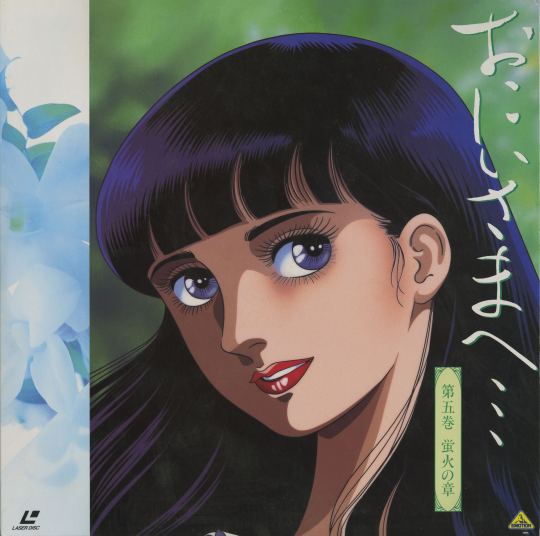
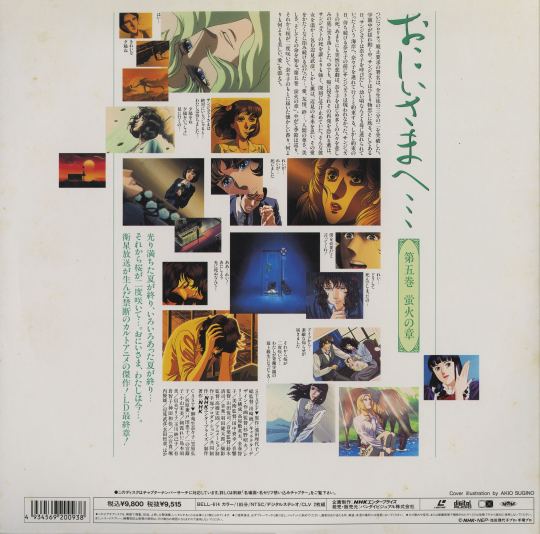
Volume Five Subheading
The summer full of light ends, the eventful summer ends… And then the cherry blossoms bloom again… Brother, I am now… A satellite broadcast-born forbidden cult anime masterpiece! The final chapter on LD!
Volume Five Synopsis
Finally, the petition to abolish the sorority has garnered signatures from over two-thirds of all students. As the campus is in a state of upheaval, Saint-Just is lost in thought alone. One day, he calls Nanako out and promises to take her to the beach where he used to go often with his mother when he was younger. However, on the promised day, Saint-Just never shows up. His sudden death plunges many people, including Nanako, into the depths of sorrow. Among them, Kaoru, who is battling cancer and fearful of its recurrence, takes the news of Saint-Just’s death most seriously. She finds comfort in the warmth of Takahiko Henmi, but continues to stubbornly refuse his love, thinking about his future. Love, friendship, bonds… The fifth volume, titled “Chapter of the Fireflies,” explores the dignity, beauty, and value of human life. Seasons turn, and the cherry blossoms bloom again, bringing back familiar scents to Nanako. All of this is accompanied by the most beautiful “love.”

Volume Five’s “From the staff to all the fans”
Bio:
Riyoko Ikeda
Born December 18, Showa 22 (1947). Native of Osaka City. Blood type AB. Graduated from Tokyo Metropolitan Hakutsuru High School and went on to the Philosophy department at Tokyo University of Education (now Tsukuba University). Began drawing manga during her time in school and debuted with “The Girl in the Rose Mansion.”
In 1972, she achieved great success with “The Rose of Versailles,” acquiring a broad fan base that transcended the realm of girls’ manga. Known for her keen historical perspective and deep insight into human nature. Active as a writer and essayist as well.
Her hobbies include Nihon buyo (Japanese traditional dance), oil painting, movie appreciation, vocal music, piano, cooking, and knitting. Her work has been selected for the 76th Nika Exhibition.
Major works: “The Rose of Versailles,” “Window of Orpheus,” “Empress Catherine,” “To My Brother,” “At the Ends of the Sky,” “The Blue Pomegranate,” “My Manga”
Books: “If Only Life Could Be Lived Once,” “Women of the French Revolution,” “Women Who Wrote Masterpieces”
Currently writing “Eroica” and “Prince Shotoku.”
The letter:
As one who has journeyed far from that radiant chapter called youth, a time that shone with an almost awkward brilliance, I find myself in a peculiar blend of bewilderment and nostalgia. Seeing my old ideas of high school life come to life as animation almost 20 years later is surreal, to say the least.
Still, it’s exciting: hearing voices given to these characters, seeing them talk, laugh, and get angry. Watching them come alive is truly a thrilling and satisfying experience.
Ah, adolescence — everyone’s inescapable stairway to adulthood. Some people take each step slowly and carefully, while others rush ahead, ending up out of breath or even lost. And then, there are those who may lose their direction, standing still, contemplating each step. Wrapped in the love of family, meeting various people, nurturing friendships, experiencing love, and going through the ups and downs of hurt and forgiveness — it would be wonderful to climb those steps in such a way.
Volume Five’s “Letter to Dear Brother”
Bio:
Rumiko Takahashi
Born in Niigata Prefecture.
Debuted in 1978 with “Katte na Yatsura,” submitted while still in college, in Shonen Sunday.
Famous works include “Urusei Yatsura,” “Maison Ikkoku,” and others.
Currently serializing “Ranma 1/2” in Shonen Sunday.
The letter:
A masterpiece infused with the creator’s soul.
When I heard from the staff that “Oniisama e…” was getting the anime treatment on satellite TV, I was surprised. I’d delved into the original comic before and it’s quite an eccentric story. “How are they going to pull this off?” I thought. But learning that the script was in the capable hands of my acquaintance Tomoko Konparu, I was very excited.
In fact, the anime that aired was genuinely captivating. The characters are so larger-than-life that they electrify the screen the moment they step into frame. It’s been a long time since an anime had that kind of presence.
I believe the animation is done by the same people who worked on “Tomorrow’s Joe 2.” The scenes are so visceral that you can almost feel the punches land and see the fighters hit the mat. I kept asking myself, “Why isn”t a mouthpiece flying out?” (laughs)
My favorite character in the work is Nobuo Mariko. The scenes where she bites her lip until it turns a flushed red, I find it really cute.
But what blew me away was the show’s emotional intelligence. Just when the heroine seems on the brink of breaking, a lifeline is thrown her way. This nuanced touch prevents the darker, more harrowing elements from overwhelming the viewer. It’s as if you can feel the sincerity of the creator throughout the piece.
And that’s it. Again, check out the full scans on Archive.org, and remember to encourage all your friends to experience this beautiful anime!
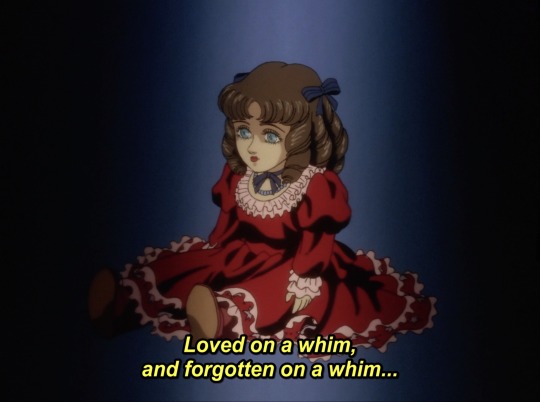
135 notes
·
View notes